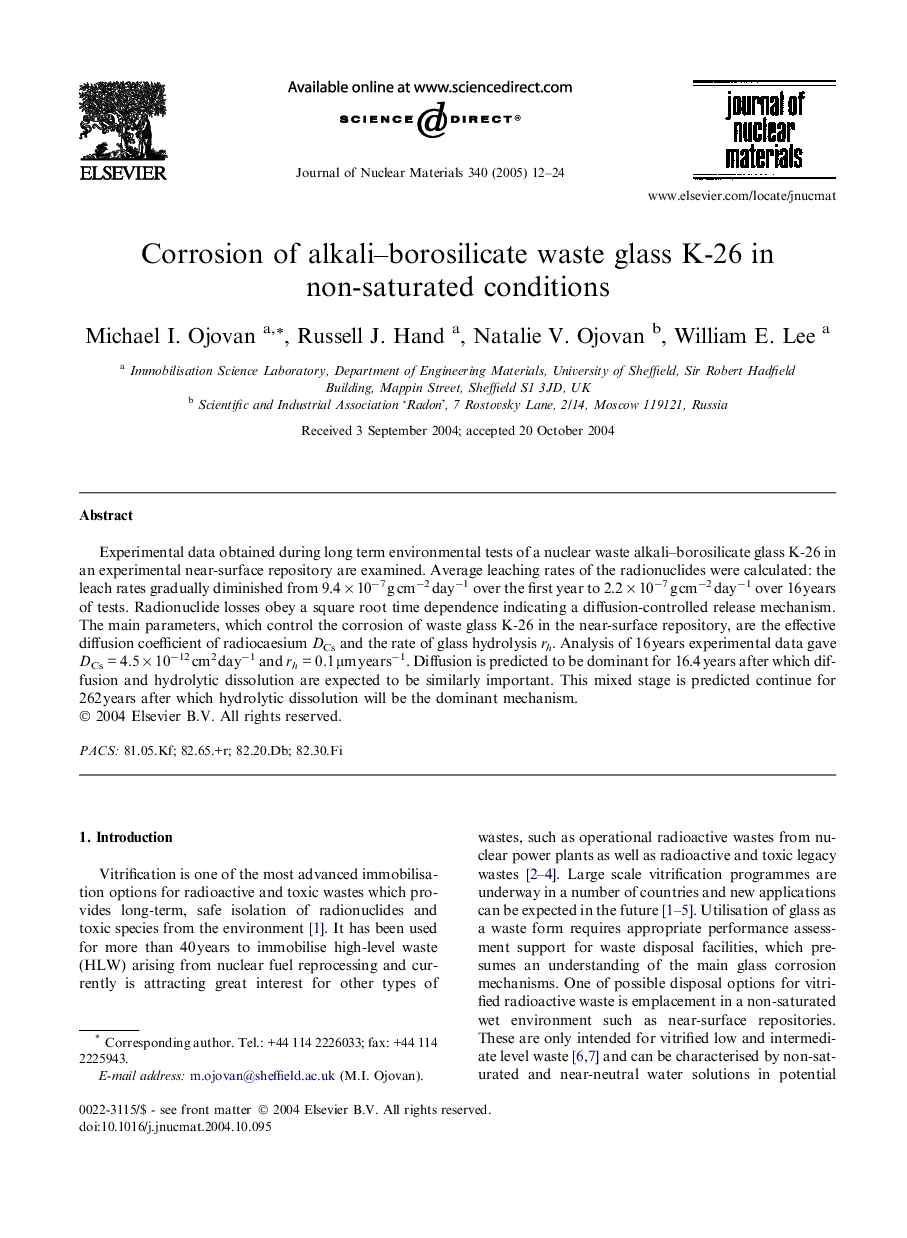| Article ID | Journal | Published Year | Pages | File Type |
|---|---|---|---|---|
| 10645265 | Journal of Nuclear Materials | 2005 | 13 Pages |
Abstract
Experimental data obtained during long term environmental tests of a nuclear waste alkali-borosilicate glass K-26 in an experimental near-surface repository are examined. Average leaching rates of the radionuclides were calculated: the leach rates gradually diminished from 9.4 Ã 10â7 g cmâ2 dayâ1 over the first year to 2.2 Ã 10â7 g cmâ2 dayâ1 over 16 years of tests. Radionuclide losses obey a square root time dependence indicating a diffusion-controlled release mechanism. The main parameters, which control the corrosion of waste glass K-26 in the near-surface repository, are the effective diffusion coefficient of radiocaesium DCs and the rate of glass hydrolysis rh. Analysis of 16 years experimental data gave DCs = 4.5 Ã 10â12 cm2 dayâ1 and rh = 0.1 μm yearsâ1. Diffusion is predicted to be dominant for 16.4 years after which diffusion and hydrolytic dissolution are expected to be similarly important. This mixed stage is predicted continue for 262 years after which hydrolytic dissolution will be the dominant mechanism.
Related Topics
Physical Sciences and Engineering
Energy
Nuclear Energy and Engineering
Authors
Michael I. Ojovan, Russell J. Hand, Natalie V. Ojovan, William E. Lee,
